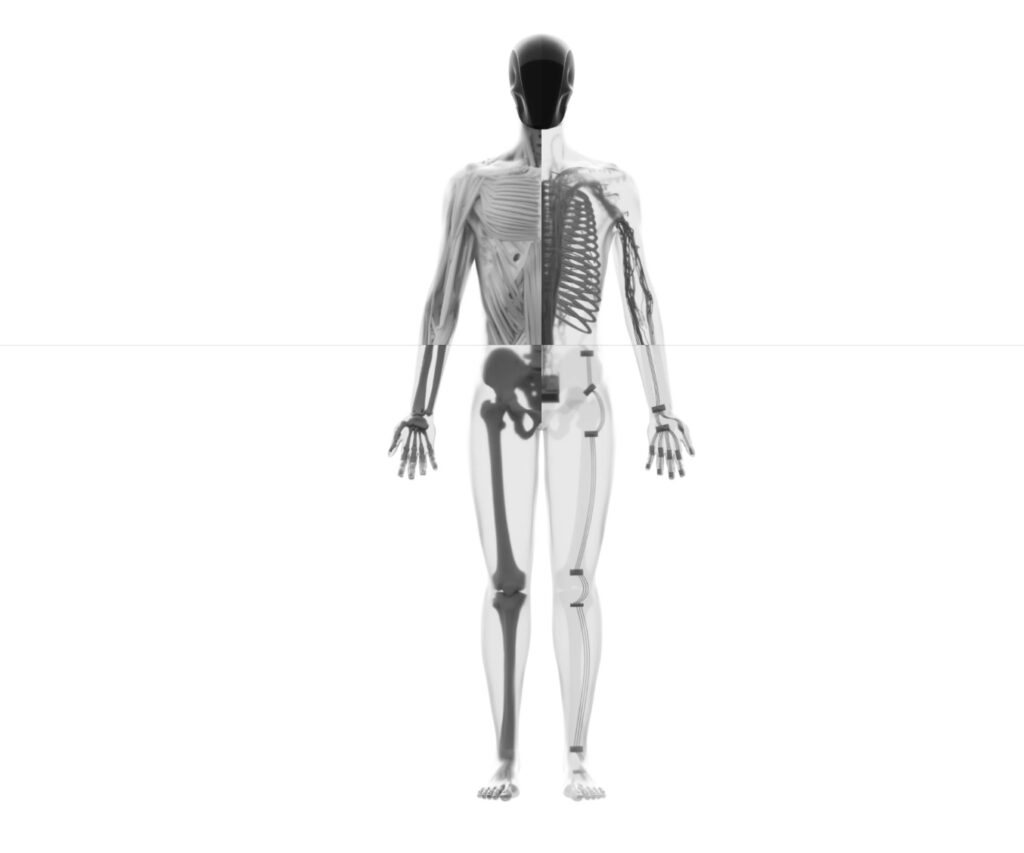How a Polish Startup’s Synthetic Human with Lifelike Muscles is Redefining Robotics—and Stirring Global Debate
- Lifelike Movement Achieved: Protoclone mimics human motion with unprecedented precision using 1,000+ synthetic “Myofibers,” 500 sensors, and anatomically accurate bones, sparking both awe and unease.
- Public Fascination Meets Fear: The robot’s eerie, sci-fi-esque debut video has gone viral, amassing 45 million views and reactions ranging from humor about job displacement to existential dread.
- Biomimetic Breakthrough: Unlike competitors like Tesla, Clone Robotics prioritizes replicating human biology—muscles, ligaments, and even a vascular system—to create robots that move, sense, and adapt like living beings.
In a dimly lit workshop, a faceless figure dangles from the ceiling, its translucent skin revealing a web of synthetic muscles twitching beneath. This is Protoclone V1, the latest creation from Poland’s Clone Robotics—a humanoid so lifelike it blurs the line between machine and organism. Unveiled in a spine-chilling video set to Ludwig Göransson’s haunting score, the android’s fluid movements and anatomical precision have captivated—and terrified—the internet.
Engineering Humanity: Myofibers, Sensors, and the Quest for Realism
At Protoclone’s core lies Myofiber, a revolutionary artificial muscle technology developed in 2021. These water-powered actuators mimic mammalian skeletal muscles, attaching to 3D-printed bones at exact anatomical points like tendons. The result? Over 200 degrees of freedom (compared to a human’s ~360) and movements so natural they rival biology.
The robot’s “nervous system” includes 70 inertial sensors tracking joint angles, 320 pressure sensors providing muscle-level force feedback, and four depth cameras enabling vision. Future upgrades will swap pneumatics for hydraulics, adding vascular-like fluid systems for even smoother motion.
Clone’s approach flips traditional robotics: instead of engineering movements around rigid parts, they built a skeleton mirroring all 206 human bones (with minor fusions), then added muscles. “The outcome isn’t just functional—it’s disturbingly human,” notes a robotics engineer.
From Viral Horror to Commercial Ambition
The Protoclone video’s viral success (45 million views and counting) reveals a cultural split. Comments range from jokes about the bot “already hanging itself” to fears of job loss (“90% of jobs gone”) and uncanny valley dread (“my sleep paralysis demon”). Others speculate ties to tech mogul Bryan Johnson, citing similarities in musculature.
Yet Clone Robotics has serious goals. While the University of Tokyo’s Kengoro (2017) pioneered musculoskeletal bots for research, Protoclone targets real-world applications—think healthcare, manufacturing, or even companionship. This places Clone in direct competition with Tesla’s Optimus and Boston Dynamics, albeit with a biomimetic edge.

Clone’s Evolution: From Robotic Hands to Full-Scale Humanoids
Clone’s journey began in 2021 with a robotic hand capable of catching balls and rotating thumbs—a feat achieved via artificial bones and tendons. By 2023, they’d scaled up to a humanoid torso with a functional spine and shoulders. December’s Clone Alpha, their first full-scale bot, marked their debut in the humanoid market.
Protoclone represents their crowning achievement: a bipedal android with 1,000+ Myofibers and a sensor suite rivaling biological feedback loops. “Our ligaments and joints are designed to fail like humans’—gracefully, not catastrophically,” explains Clone’s team.
The Future: Hydraulics, Ethics, and the Uncanny Valley
As Clone transitions to hydraulic systems, Protoclone will gain vascular-like efficiency, edging closer to true biomimicry. Yet challenges loom: public discomfort, ethical debates over AI integration, and technical hurdles like energy consumption.
For now, Protoclone stands as a testament to humanity’s drive to recreate itself—a machine that walks, sees, and feelsalmost alive. Whether it becomes a helper or a weapon, a companion or a competitor, one thing is clear: the age of synthetic humans is no longer science fiction.

